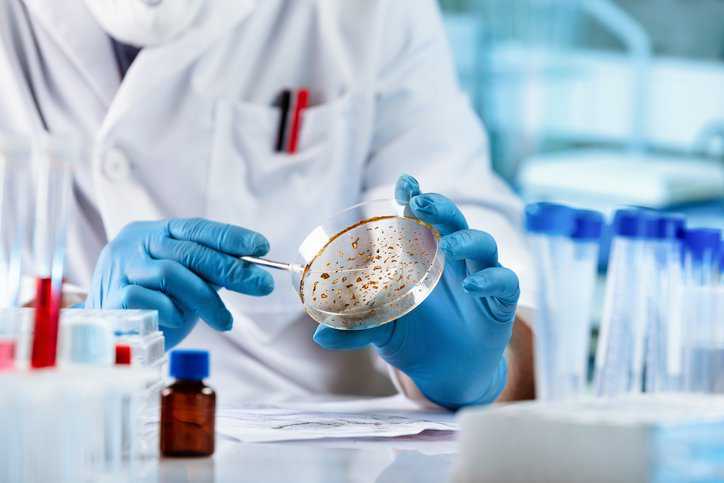When studying toxicant impacts on biological systems in the laboratory, artificial lighting is typically used. Since light can impact the responses of the test organism and the toxicant, special precautions must be taken. ASTM E1733-95(2014): Standard Guide For Use Of Lighting In Laboratory Testing applies to the use of artificial lighting in laboratories for environmental testing.
How Does UV Light Impact Test Organisms in a Lab?
It is crucial that environmental laboratory lighting mimics the light conditions in the relevant compartment of the natural environment with respect to both intensity and spectral output. This is because the level of ambient lighting in the laboratory could affect the growth of the organism or toxicity of a contaminant—or both.
Light impacts the growth of microorganisms by modulating important pathogenicity determinants and virulence in certain bacteria. Ultraviolet (UV) radiation affects organisms by damaging genetic material (DNA) and cellular components (proteins, membranes). If UV exposure is sufficient, mortality can occur. Further, the toxicity of some organic pollutants is enhanced dramatically by UV radiation present in sunlight. As a result, ASTM E1733-95(2014) specifies that it is important to consider lighting in all forms of environmental testing.
What Is ASTM E1733?
ASTM E1733-95(2014) covers artificial lighting when studying the responses of living organisms to contaminants in a controlled manner. The lighting conditions described in this standard are applicable to tests with most organisms and using most chemicals. Even if the test organism does not require light, the investigator will generally need light to manipulate the samples, and the test might be conducted under the ambient light of the laboratory. As such, ASTM E1733-95(2014) details specifications for the use of lighting in laboratory testing, enabling investigators at different sites to be able to select similar light sources. This will provide standardization of a factor that can have major impact on the effects of hazardous chemicals.
What Type of Bacteria Can Survive UV Light?
Microorganisms colonize all possible ecological habitats—even those that are subjected to harsh stressors such as ultraviolet (UV) radiation. When UV light enters a microorganism, its energy will damage the microorganism’s cellular function so that it is unable to grow. Some bacteria, however, can survive UV light, such as:
- Bacillus spores: one of the best known UV resistant bacteria, with some spores surviving for years in nutrient depleted environments
- Licheniformis: found in soil and is the most UV resistant strain, with UV resistance independent of pigmentation
- Micrococcus: a bacteria that occurs in a wide range of environments, including water, dust, and soil that can survive extreme UV radiation
- Photoheterotrophs: bacteria that can survive in natural environments with light energy available, even when organic sources are depleted
- Actinomycetes: are gram-positive bacteria that are terrestrial or aquatic in nature (they play a great role in maintaining the soil ecology) and can sometimes survive UV radiation
- Kocuria, Micrococcus, or Deinococcus spp: often UV-resistant microorganisms that are commonly found in sun-irradiated environments
UV Light Sources in a Laboratory
The most likely sources of UV light radiation in the lab setting include:
- Transilluminators (used to visualize DNA bands in gels)
- Crosslinkers
- Germicidal lamps in biological safety cabinets
- Nucleic Acid Transillumination boxes
- Handheld UV lamps
- UV Lasers
- Blue-emitting LEDs used for photocatalysis (some of the emissions fall into the UV range)
ASTM E1733-95(2014): Standard Guide For Use Of Lighting In Laboratory Testing is available on the ANSI Webstore.
